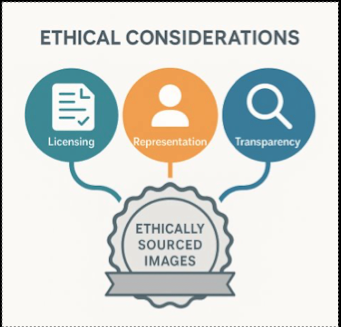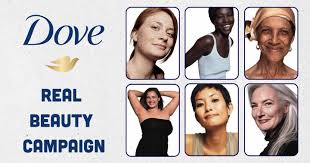Design Template by Anonymous
Ethics of Imagery in Web Design
Ethical Considerations
The ethics of images is one of the most important aspects of web design that designers frequently ignore. It's crucial to remember that the pictures we use for our websites can affect how users interact with them overall and can harm a brand's reputation. When picking and choosing particular photos, we need to be aware of the potential ethical consequences.
- Ethically using imagery is essential to building trust
- Considerations include licensing, diversity , transparency and consent
- Failing to follow these standards can harm your brands reputation

Licensing and Intellectual Property
In today's world there are images everywhere, but not all of them are free to use. This raises concern when using unlicensed or improperly sourced images. If you fail to properly source images or use ones that are unlicensed it can lead to major legal consequences such as copyright infringement lawsuits that can ruin a brand's reputation and result in major fines.
- Using images that are unlicensed or not properly sourced can lead to legal issues and impact brand reputation.
- To avoid this, always source images from reputable platforms such as Pexels, Unsplash, Adobe Stock
- When in doubt use royalty free or licensed images, and ensure you have permission to use them


Diversity and Representation
It's critical that content creators choose images that do not reinforce harmful stereotypes but rather promote inclusivity. When selecting your imagery, it is also important that diverse groups are represented in a way that reflects the real world and includes a variety of races, genders, ages and abilities. Images are extremely powerful. They can convey certain messages, tell stories and shape how people feel about a certain brand. Users expect to see themselves represented in the content that they engage with.
- It is important as a designer to represent diverse groups in your imagery which includes race, gender, age and ability
- Representation should be a reflection of your audience and promote inclusivity
- Avoid stereotypes and promote authenticity to build a positive brand image

Doves "real beauty" campaign is an example of diversity within imagery. Dove shifted the focus away from unrealistic beauty standards to a more inclusive representation of woman of all shapes, sizes and skin tones. In being more diverse, they questioned social norms and promoted a more inclusive attitude which connected with a large group of customers.
Content and Transparency
- You must gain consent from identifiable people within images
- Ensure that you have clear permission before using someones image (ex. Model release)
- Failure to gain consent can lead to major legal consequences
